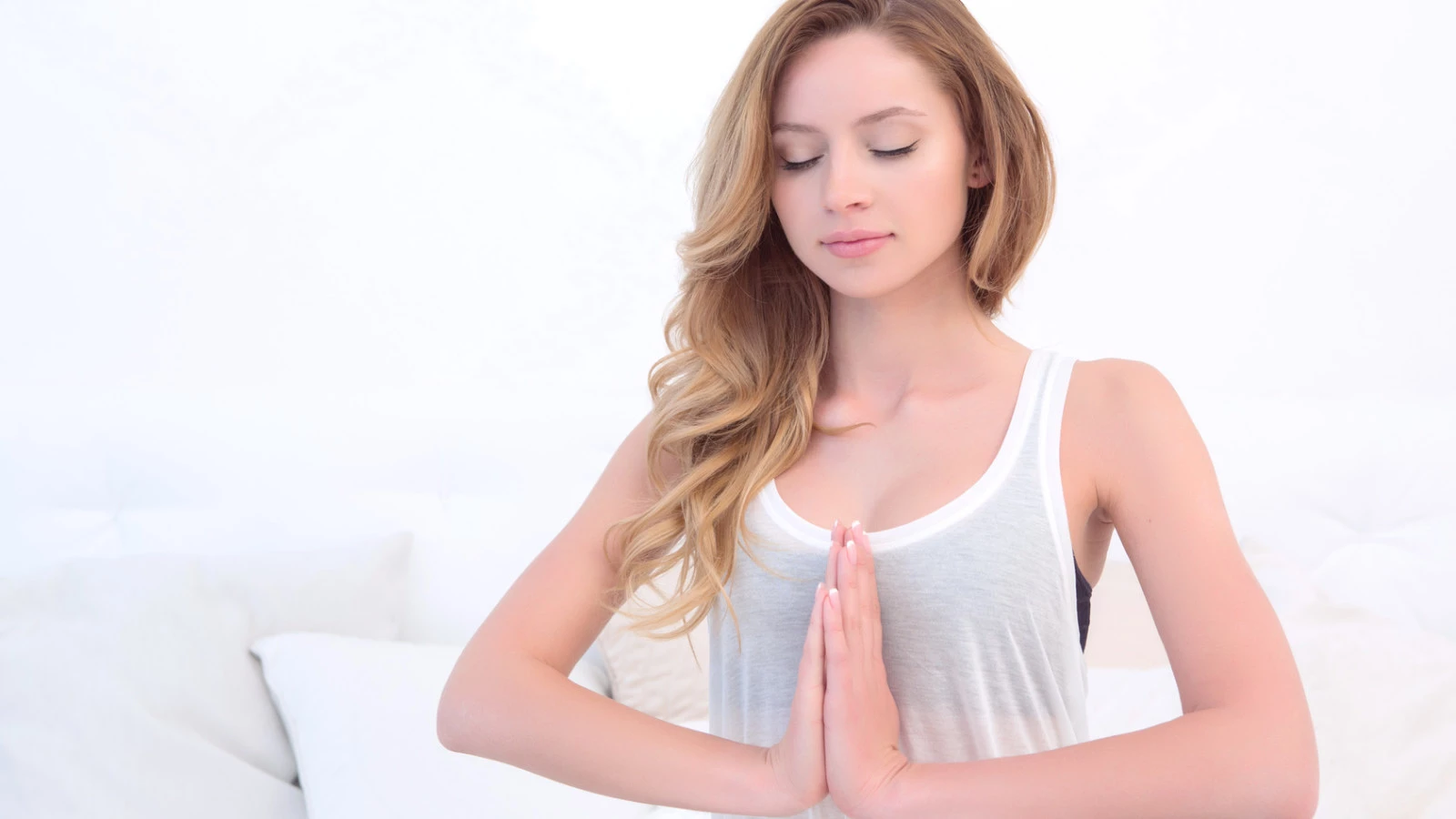The Fifth Limb of Yoga: Pratyahara

Pratyahara is confusing to many students of yoga philosophy. This fifth limb on Patanjali’s eight-limbed path of yoga from the Yoga Sutras translates as “withdrawal of the senses,” which initially might seem like the opposite of awareness—and yoga is, first and foremost, a practice of awareness.
What is Sensory Withdrawal in Yoga?
In a yoga class, the teacher might encourage you to notice bodily sensations as they arise and then fall away, and to expand your awareness of these sensations. Don’t these sensations come to you through the gateways of the five senses? If you’re trying to become more and more aware, why would you then pull away from the sights, sounds, smells, tastes and touches that arise?
Sensory withdrawal doesn’t mean that you ignore stimuli or dull your senses. It means that you intentionally draw the five senses inward and create a little bit of space between the sensation or stimuli and your reaction to it.
How to Practice Pratyahara
Still confused? Let’s use your smartphone as an example. Imagine you’re sitting on the couch with your smartphone beside you. If you’re sitting there daydreaming and hear a “Bing!” from your phone, you might automatically grab for it to see who’s texting you. Then you read another text from yesterday, then check your email, then surf the internet … until 33 minutes later you finally look up from the screen, dazed and glassy-eyed from your wanderings through phone land.
If you were instead sitting there practicing pratyahara, when your phone binged you would hear it, then pause to observe what happens within you as a result of hearing that sound. You’d notice if your hand wants to immediately grab for the phone, or if anxiety arises when you don’t allow yourself to reach for it. You’d simply sit and watch your physical, mental and emotion reactions to the sensation of hearing a bing. After a while, you’d consciously choose either to pick up the phone or not. But you would have created a little gap between the sensation and your choice of action.
That gap is essentially pratyahara. All too often, when we’re going about our everyday business without awareness or mindfulness, we have knee-jerk reactions to stimuli. Some of these reactions are good and necessary, like when you start to walk across the street, hear a horn blare, and jump out of the way of an oncoming car. That kind of knee-jerk reaction will save your life.
But it’s not quite so helpful to react in the same impulsive way to a critical comment from your partner, or a negative performance review from your boss, or the little aches and twinges that come up on a daily basis. In those circumstances, it’s wise to create some breathing room between the stimuli itself and the way you react to it. Through pratyahara, you can choose how to react rather than constantly being pulled in this direction or that.
Pratyahara on the Mat
You could practice pratyahara the next time you roll out your yoga mat. When you come to Downward-Facing Dog for the first time, watch what happens. Observe how the body feels. Are there areas of your body that feel achy, sore or tight? Do other areas feel relaxed, open and pliable? Notice if you want to wiggle around, fidget, or come out of the pose.
Regardless of what comes up, give yourself five full breaths to simply stay, in stillness, without giving in to any temptations to move or come out of the pose. Simply watch, observe, and listen. Notice sensations as they arise, then fall away. After those five breaths, consciously choose to either move, or remain still; to stay in the pose longer, or come down to hands and knees; to challenge yourself to take five more breaths in stillness, or recognize that you need to rest and come to Child’s Pose.
In so doing, the space that you’ll create around sensations and stimuli is a space full of awareness: awareness of your own reflexive reactions; awareness of your feelings, thoughts and emotions; and awareness of your freedom to choose how to react rather than being tossed to and fro by the pull of your senses.
Read another article in this series from YogaUOnline and Christine Malossi – The Fourth Limb of Yoga: Pranayama.
Study with Richard Miller and YogaUOnline: Fostering Resilience and Well-Being On and Off the Mat.
 Christine Malossi, RYT 200 is based in New York City, where she offers a mindful, alignment-focused Vinyasa practice that cultivates balance, awareness and equanimity. In addition to teaching private clients and group classes at studios throughout Manhattan, she also teaches at the Spencer Cox Center for Health at Mount Sinai Hospital’s Institute for Advanced Medicine where she designs a practice specifically tailored to patients diagnosed with HIV and other chronic illnesses. Christine is honored to be teaching yoga and to have the opportunity to pass on to others the joy and freedom that she has found in her own practice. Find her at www.christinemalossi.com
Christine Malossi, RYT 200 is based in New York City, where she offers a mindful, alignment-focused Vinyasa practice that cultivates balance, awareness and equanimity. In addition to teaching private clients and group classes at studios throughout Manhattan, she also teaches at the Spencer Cox Center for Health at Mount Sinai Hospital’s Institute for Advanced Medicine where she designs a practice specifically tailored to patients diagnosed with HIV and other chronic illnesses. Christine is honored to be teaching yoga and to have the opportunity to pass on to others the joy and freedom that she has found in her own practice. Find her at www.christinemalossi.com


